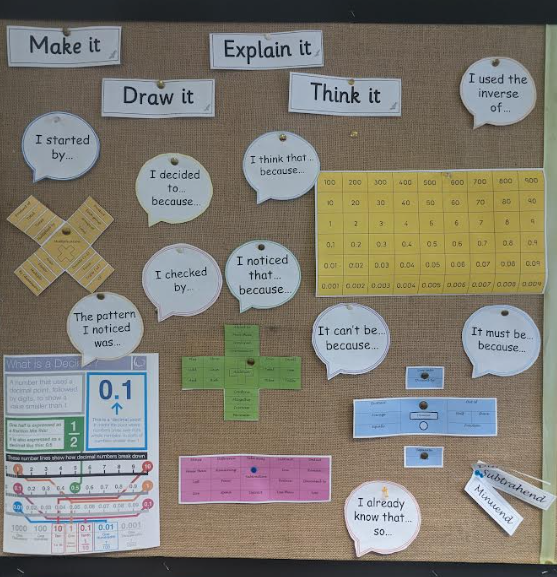Mathematical Thinking
Mathematical thinking is a fundamental cognitive skill that empowers students to reason, problem-solve, and build links between mathematical concepts. In recent years, the approach of mathematics mastery has gained traction as an effective method for fostering mathematical thinking in primary education. I believe this has been phenomenal for encouraging our children to be adaptive whilst taking risks within their mathematical learning.
Through our teaching of Mastery, we use an instructional approach that emphasizes conceptual understanding, procedural fluency, and mathematical reasoning. It encourages students to develop a deep understanding of mathematical concepts before moving on to more advanced topics. By immersing students in concrete experiences and manipulatives, they develop a deep understanding of the numerical relationships that underpin mathematics. This foundation serves as a springboard for more complex mathematical thinking. Often, we try to draw an emphasis on problem-solving skills. Students are presented with rich, open-ended problems that require critical thinking and creative approaches that are fantastic to watch as they engage with debate within their maths lessons. Through guided instruction and collaborative discussions, they learn to analyse problems, devise strategies, and justify their solutions. This process nurtures their ability to think flexibly and develop multiple problem-solving pathways. We strive to challenge our students to reason mathematically and communicate their thinking effectively and efficiently. By engaging in mathematical discourse, students develop their ability to explain their ideas, listen to others' perspectives, and construct logical arguments. This practice enhances their metacognitive abilities and deepens their understanding of mathematical concepts.
As with our whole school drive on the vocabulary of learning characteristics, embedding the children in this language through encouraging high standards and frequent practice is vital. We support our children to use the correct terminology and we help build their understanding through sentence stems and plenty of opportunities to verbalise their conjectures. One way to support this is through a simple yet purposeful working wall. I have attached an example that aims to be inclusive with low sensory items as well as drawing the children's attention to speech bubbles that promote and support the children in verbalising their understanding.


